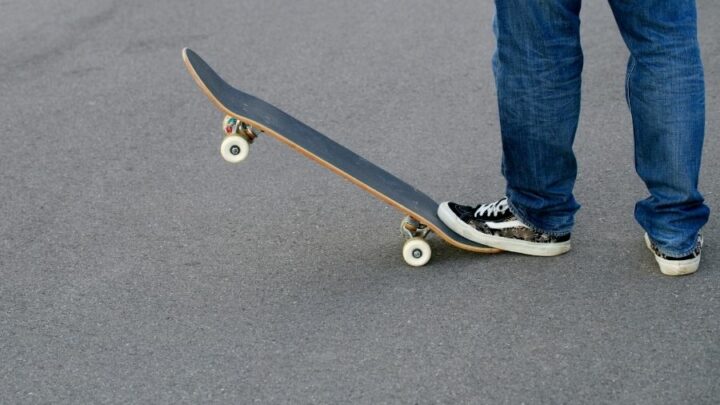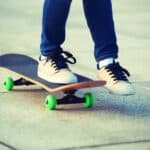If you are new to skateboarding and its culture, one of the first techniques that you are likely to be eager to learn is how to stop on a skateboard.
However, before you can even attempt movement and learn how to stop, you need to master your balancing techniques. Then, you can go on to movements and stopping.
Fortunately, there are a few different ways that you can stop on a skateboard, so if one technique doesn’t work, you can have a backup plan.
So, how do you stop on a skateboard?
Let’s explore the four main techniques that will bring you to a halt when you are approaching a crosswalk or tree or are just ready to call it quits for the day.
How Do You Stop On a Skateboard?
The main techniques for stopping on a skateboard are tail scraping, safely jumping off the skateboard, using your foot as a brake, controlled slide stopping, and power sliding. Alternatively, you can try heel braking, carving, rolling into the rough, board popping, or crashing (in worse-case scenarios).
Tail Scraping, Crashing, and Jumping Can Help You Stop (but aren’t recommended)
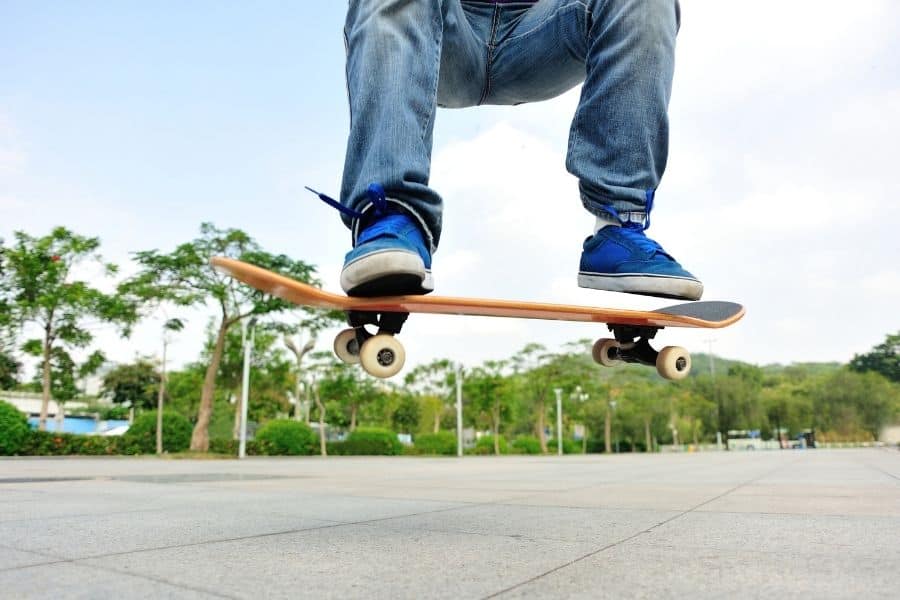
Skateboard Jumping
Sure, you can always press your back foot down on the tail of your skateboard, which will cause your board to slow down as it scrapes against the asphalt.
While this technique will certainly bring you to an eventual stop, most skateboarders don’t recommend it due to the obvious damage that it will cause to your skateboard.
Now, if it’s a death or life situation, who really cares about the skateboard? If a sudden stop is absolutely necessary, then you may not be concerned about the wear and tear of the tail.
In some situations, the only way to stop on a skateboard is to scrape the tail or allow yourself to crash.
Alternatively, you can jump off your skateboard in the event of an emergency, but if you resort to this method, make sure you jump safely, preferably into a grassy area and away from traffic.
Of course, ensure that your head’s protected in case of a jump or crash.
Heel and Foot Braking Can Help You Stop on a Skateboard
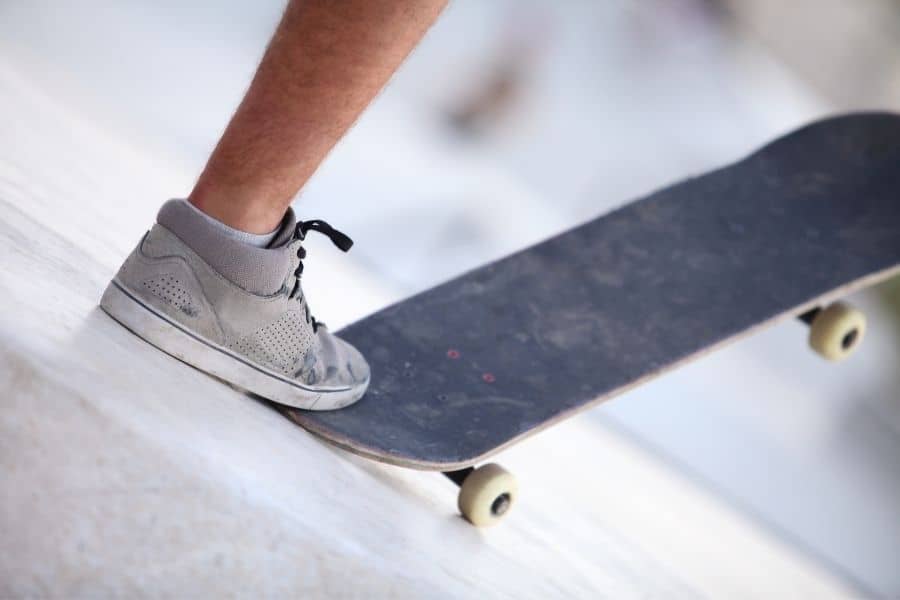
How to Stop on a Skateboard
The foot brake technique is as simple as you could imagine. It’s actually easier than tail scraping, but it will wear out the soles of your shoes if you use this technique often.
Basically, you just flatten your foot and allow it to drag across the ground to slow your speed and eventually bring you to a safe stop.
Now, this technique is ideal for beginner skateboarders, but once you have mastered more advanced skateboarding techniques, you won’t need to wear your shoes out any longer!
Instead of using your foot to brake, you can try using your heel – if you are skilled at balancing.
To heel brake, you’ll need to lift up the wheels on the front of your skateboard, while simultaneously dropping your heel down and allowing it to drag across the ground. Just avoid dragging the razor deck, which results in additional tail wear and tear.
Controlled Slide Stopping and Power Sliding Can Bring You to a Halt
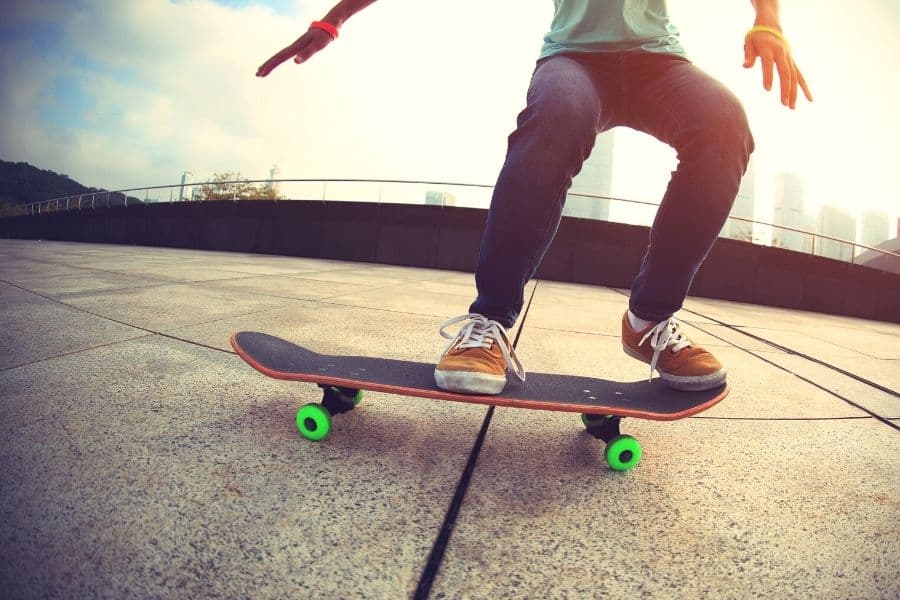
Power Sliding on Skateboard
These techniques are much more advanced and require a high level of skill on a skateboard. If you are trying to learn how to stop, chances are that you haven’t reached this level yet, but no worries, you’ll get there eventually.
Controlled slide stopping is often recommended when you are cruising downhill and need to stop.
This technique involves moving your front foot close to the nose of the skateboard and suddenly turning your board around at an angle of 180 degrees.
Now, controlled slide stopping requires practice beforehand and even skilled skateboarders may need to touch the ground with their hands to slow themselves and keep the board steady.
A power slide involves completely shifting your weight, which will automatically force your skateboard to shift into a wheel slide. This will result in your wheels screeching and slowing down until it stops.
Carving, Board Popping, and Rolling to the Rough are Skateboard Stopping Techniques
OK, so maybe power sliding is a little too advanced, but you don’t want to wear out your shoes or your skateboard while trying out other techniques.
If you have already mastered carving, then you may want to try doing long, full turns on your skateboard to slow your speed down enough that you can pop your skateboard.
Next technique up — board popping. Sure, this is slightly advanced, but it’s a technique that every dedicated skateboarder eventually masters.
Now, this will only work if you are moving slowly, but yes, you can pull an Ollie and simply pop your skateboard right into your hand. Sounds neat, huh?
Maybe you just haven’t reached the level of carving or board popping, but thankfully, rolling into the rough is as simple as it gets.
Just direct your skateboard towards a grassy area and once you start moving on the grass, you will naturally slow down and stop.
Frequently Asked Questions about How to Stop on a Skateboard
When Should You Stop Skateboarding?
Aside from being ready to call it a day or reaching your destination, you’ll know when you need to stop on a skateboard. Most people stop skateboarding in their 20s when work, school, and family take priority. However, it’s perfectly fine to continue to skateboard in your 50s and 60s.
How Should You Practice Stopping on a Skateboard?
You should first practice stopping when you are moving slowly and begin with the foot braking technique. As your skills improve, you can attempt stopping at faster speeds and using more advanced techniques.
Conclusion
While there are several ways to stop on a skateboard, the best technique depends on your skill level and the circumstances that are causing you to stop.
Regardless of which technique you use, learning to stop is something that every skateboarder needs to know to safely enjoy this amazing sport.
